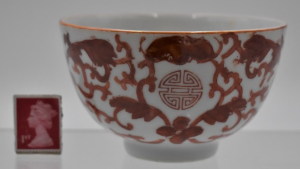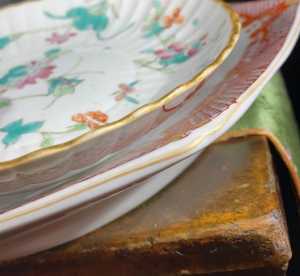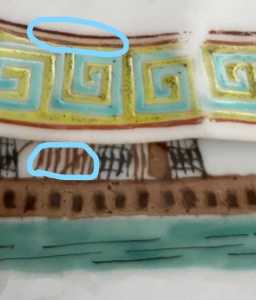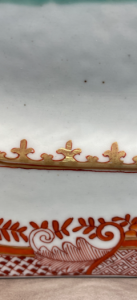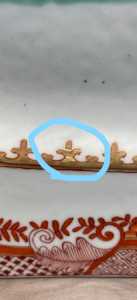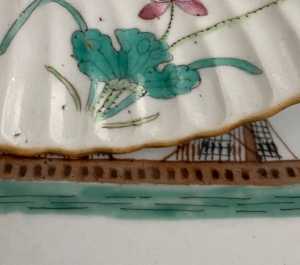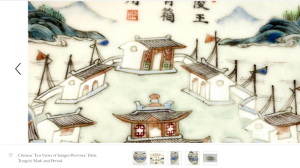The Chinese and Asian Art Forum. For Fans, Collectors and Dealers.
 Basic Rules For the BidAmount Asian Art Forum: Talk about whatever you want. You can even discuss and offer things that are for sale if they are authentic. Maximum image file size per post is 2 MB. Images of 700pxl x 700pxl are optimal if saved at a medium resolution. Be respectful of others and enjoy yourself. Click the YouTube link for a brief tutorial on using the forum. You can also EMBED Videos by cutting and pasting from You-Tube, Vimeo etc.
Basic Rules For the BidAmount Asian Art Forum: Talk about whatever you want. You can even discuss and offer things that are for sale if they are authentic. Maximum image file size per post is 2 MB. Images of 700pxl x 700pxl are optimal if saved at a medium resolution. Be respectful of others and enjoy yourself. Click the YouTube link for a brief tutorial on using the forum. You can also EMBED Videos by cutting and pasting from You-Tube, Vimeo etc.
NOTE: To post an item or add a new post, click open the category title from the FORUM LIST, and CLICK the Blue ADD TOPIC button.
@jbeer2121 Jeremy I agree and disagree. lol I have spent some time in my books today and with my personal collection also and have come to my own opinion on the platter. I believe the platter to be late18th century to early 19th century but I am convinced it was later painted in the early Tongzhi period give or take 5 years. There are many reasons for this opinion and that I don't believe it to be modern. The platter was not finished and this is one of the clues it was also not burnished this is an important clue and the burnt red enamel is a really telling clue. First old gilding was done with pure gold no modern gilding is done with pure gold powder I have researched gilding extensively you cannot burnish modern gilding. But you can burnt old gilding a hundred years later and it will shine like new. If you look under a loop on old gild you will actually see the powder and if heated to high in the kiln it will clobb together and form micro nuggets. I have burnished a spear to demonstrate. During the second half the painters became lazy and did not burnish but I don't think this was the case here. I believe before this platter was completed something happen that stopped the manufacturing. The rebellion at the time where porcelain kilns were destroyed and other methods of retrieving porcelain was well documented this would explain the use of an unpainted platter from the 18th century. During this same time America had an interest in Chinese export but competition with the Japanese forced the Chinese to make desperate moves. So the second clue is the burnt red enamel this enamel was very well used during this period I have several mark and period pieces the brown you see on the platter is actually washed down burnt enamel this practice was also used a lot in the Tongzhi period. Now we move on the the green enamel of the water this enamel was very popular for leaves during the same time. The Tongzhi period was also very well known for the brown boarder almost every piece I own has this feature. Why I believe the platter itself is 18th century it very clear to me It is very well potted the bottom is smooth and the edges are well done the glaze contraction are again a trait of this period. So this is my conclusion and what makes the most since to me.
Tongzhi mark with burnt red enamel
Brown lip and washed brown line next to burnt red line
area of gilding I burnished
From Gotheborg
Type of decoration involving the application of gold. The oldest technique for gilding is called "best gilding", "solid gilding" or "fire gilding". Pure gold is mixed with mercury to a liquid, applied to the piece to be gilded and than fired at about 730 centigrade to leave pure gold. The gold is dull in appearance when it comes from the kiln and needs to be burnished to produce a bright finish.
In her book 'Gilded Dragons' Carol Michaelson refers to this method as "Mercury amalgam gilding" and tells it is done by mixing gold with mercury and applying the resultant amalgam to a metal object. When heated the free mercury boils off and the gold remains on the surface as a matt plating layer. Mercury gilding was not developed until the Warring States period.
Another method introduced in the west in the 1850's is "liquid gold" where powdered gold is applied as a liquid suspension and is painted onto the pieces. When it comes from the kiln, the gold is already bright and needs no burnishing. The drawback of this method is that bright gold tends to rub off very easily.
According to Pere d'Entrecolle, a Jesuit missionary reporting from the city of Jingdezhen in 1712 and 1722, gilding on Chinese porcelain was introduced "early in the Qing dynasty" and was done by grinding leaf gold to a powder and mixing this with an ordinary colorless lead enamel.
It is also obvious from extant Chinese porcelain pieces, that during early 20th century it is introduced a new method of gilding, which is different from earlier methods, since it gives a high gloss shiny and metalic impression, different from the older lead glaze gilding. This method or material is likely to be the same as is still the prevalent in modern porcelain industries.
a couple of points based upon what i skimmed. 1. if the top tier auction houses pass on it, it does not mean that it is not authentic. they have high bars - sometimes a minimum of 10,000usd just to spark their interests. 2. the glossy gilding appeared c. 1875 on the Continent. i suspect that it reached China not too too long afterwards.
i think that the platter is great and i tend to go with the earlier dating, but I was caught off guard by someone else who recently posted some too good to be true export wares which turned out to be Samson.
Thanks for visiting "The BidAmount Asian Art Forum | Chinese Art"
If you sell on eBay, or have a shop feel free to post images and descriptions and links.
Check back often for discussion about the latest news in the Chinese art and antique world. Also find out about the latest Asian art auctions at Sotheby's, Christie's, Bonhams and Tajans.
Auction results for: fine porcelain, ceramics, bronze, jade, textiles and scholar's objects. As well as Japanese, Thai, Vietnamese and other Asian cultures.
Thank you,
Peter Combs
Topics and categories on The BidAmount Asian Art Forum | Chinese Art
Kangxi vases, Kangxi dishes and chargers, Kangxi ritual pieces, Kangxi scholar's objects, Qianlong famille rose, Qianlong enamels, Qianlong period paintings, Qianlong Emporer's court, Fine porcelain of the Yongzheng period. Chinese imperial art, Ming porcelain including Jiajing, Wanli, Xuande, Chenghua as well as Ming jades and bronzes.
The BidAmount Asian Art Forum | Chinese Art
A free Asian art discussion board and Asian art message board for dealers and collectors of art and antiques from China, Japan, Korea, Thailand, Cambodia, Vietnam and the rest of Asia. Linked to all of the BidAmount Asian art reference areas, with videos from plcombs Asian Art and Bidamount on YouTube. Sign up also for the weekly BidAmount newsletter and catalogs of active eBay listing of Chinese porcelain, bronze, jades, robes, and paintings.
The art of calligraphy - and for the ancient Chinese it certainly was an art - aimed to demonstrate superior control and skill using brush and ink. Calligraphy established itself as one of the major Chinese art forms during the Han dynasty (206 BCE - 220 CE), and for two millennia after, all educated men were expected to be proficient at it.
The Museum’s collections of Asian art span nearly five millennia and encompass the cultures of China, the Himalayas, India, Japan, Korea, and Southeast Asia. In 2007, the Museum launched an initiative to create dedicated galleries for the collection, beginning with a gallery for the arts of Korea ...
Chinese art is full of symbolism, in that artists typically seek to depict some aspect of a totality of which they are intuitively aware.
China Online Museum is the finest online museum of Chinese art. It features Chinese calligraphy, painting, ceramics, bronzes, carving, and other artworks.
Chinese Ceramics & Works of Art. Overview Upcoming auctions Contacts Auction results ... Christie’s sales of Chinese ceramics and works of art showcase centuries of Chinese history. Held throughout the year in London, New York, Paris and Hong Kong, they attract a wide audience of collectors and connoisseurs vying for pieces as diverse as ...
Explore Asian Art Week. Contact the Specialist Department. Chinese Paintings ... Senior Specialist, Head of Sale. [email protected]. Tel:+1 212 641 5760. Bid in-person or online for the upcoming auction:Fine Chinese Paintings on 10 September 2019 at New York. Bid in-person or online for the upcoming auction:Fine Chinese Paintings on 10 ...
Discover an abundance of must-see art from all corners of a vast continent at Christie’s NY Asian Art Week. From contemporary classical and Chinese paintings to works with exemplary provenance from the Art Institute of Chicago, our Rockefeller Paza galleries will be full of ancient treasures and contemporary masterworks in a salute to the vibrant arts of Asia.
Sold to benefit The Art Institute of Chicago’s Asian Art Acquisition Fund, the sale features 84 lots with a focus on Ming and Qing porcelains, and offers a rare insight into the taste for collecting Chinese ceramics and works of art in the Midwest from the end of the 19th century through the 1980s. Highlights include two Wanli wucai garlic-head vases, a Qianlong mark and period, blue and ...
Specialist, Chinese Paintings, Christie's London Dr Malcolm McNeill is a Specialist in Chinese Paintings at Christie’s, based in London. He previously worked as an assistant curator of the Chinese collections and the Victoria and Albert Museum in London, as a researcher at the British Museum, and as a translator and tour guide at the National Palace Museum in Taipei.
The Christie's Education 2020 Conference: The Chinese Art Market 18 Jun 2019 Christie’s Education is delighted to announce our first international academic conference in Asia which will take place in Hong Kong from 26-27 November 2020 at the Hong Kong Convention and Exhibition Centre and will run in parallel with Christie’s Hong Kong Autumn Auctions.
The summer Chinese Art sale in Hong Kong will feature works of art from several private collections, including Qing porcelains and textile from the collection of the legendary Chinese art dealer A. W. Bahr (1877–1959), fine gilt bronze Buddhist sculptures from an old Hong Kong collection, an East Asian collection of Qing dynasty wine cups and jades, and a Japanese collection of Song ceramics ...
Sotheby's Chinese Works of Art Department holds two auctions each year in London, New York, Hong Kong and Paris.
Chinese Art - View Auction details, bid, buy and collect the various artworks at Sothebys Art Auction House.
With more than 340 Chinese works of art dating from the Neolithic to the Republic periods, highlights of this sale include a selection of Qing Imperial monochromes from the collection of Arnold and Blema Steinberg, early ceramics from the Art Institute of Chicago and Chinese porcelain and works of art from the collection of Henry Arnhold.
Results: Sotheby's Asia Week achieved $52.4 million in six strong auctions, exceeding pre-sale estimates. With 76.5% of lots sold and 60.3% of lots surpassing high estimates, the Asian art sales at Sotheby's indicate continued collector interest in the finest works of art from China, India and and the Himalayas.
Today's sale of Important Chinese Art will proceed as planned with sessions at 10 AM and 2 PM EDT. Sotheby's will be monitoring the weather conditions throughout the day and will be available to coordinate alternative bidding options should conditions make it difficult for clients to attend the auction in person.
Bonhams Chinese Art department is renowned for offering the finest works of art representing the richness and breadth of China's artistic heritage, particularly Imperial porcelain, white and spinach green jades, cloisonné and Buddhist art. Specialised international auctions are held globally, including London, Hong Kong and San Francisco.
Bonhams : Chinese Works of Art We use cookies to remember choices you make on functionality and personal features to enhance your experience to our site. By continuing to use our site you consent to the use of cookies. Please refer to our privacy and cookie policies for more information.
Bonhams Fine Art Auctioneers & Valuers: auctioneers of art, pictures, collectables and motor cars. We use cookies to remember choices you make on functionality and personal features to enhance your experience to our site. By continuing to use our site you consent to the use of cookies. ... Chinese Art (US) General enquiries
Bonhams : Fine Chinese Art We use cookies to remember choices you make on functionality and personal features to enhance your experience to our site. By continuing to use our site you consent to the use of cookies. Please refer to our privacy and cookie policies for more information.
Bonhams Fine Art Auctioneers & Valuers: auctioneers of art, pictures, collectables and motor cars Bonhams : Asian Art We use cookies to remember choices you make on functionality and personal features to enhance your experience to our site.
Bonhams are international auctioneers of fine Chinese and Japanese art. We specialise in rare Imperial and Export Chinese ceramics and works of art, as well as Japanese ceramics, fine and decorative works of art from the Neolithic Period to the 20th century. View on map
Bonhams Fine Art Auctioneers & Valuers: auctioneers of art, pictures, collectables and motor cars. We use cookies to remember choices you make on functionality and personal features to enhance your experience to our site. By continuing to use our site you consent to the use of cookies. ... Asian Art Bonhams. Work. 22 Queen St.
